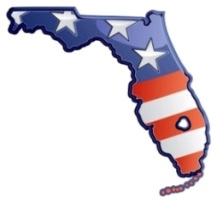 Preventing Slip & Fall Claims Slips, trips, and falls accounted for 27% of the 888,220 nonfatal work injuries that resulted in time off, in 2019, according to the U.S. Centers for Disease Control and Prevention. In 2018, numbers from the Bureau of Labor Statistics show about 7,850 injuries were caused by slips, trips, and falls in restaurants. Causes of Slip, Trip & Fall Accidents: The most common causes of slips, trips, and falls, including those that occur in restaurant kitchens, include:
Easy Prevention Methods You can prevent falls and injuries at your restaurant or facility with good housekeeping. Otherwise, the risks of employee injuries and time out of work increase. As do the chances of paying higher insurance rates and incurring regulatory fines and legal penalties. Slip, trip, and fall accidents can be prevented by taking these steps: Clean Spills Immediately Wet floors in food preparation areas, restrooms, and general walking surfaces pose a danger to employees and others. Using microfiber mops whenever there is a spill or otherwise wet floor mitigates the risk. The longer you wait to eliminate the hazard, the higher the chances of someone inadvertently contacting a wet surface and slipping. Mark Wet Areas A “Wet Floor” sign provides a clear indication of danger when the hazard cannot immediately be eliminated. For example, if you’ve just mopped a floor, it will take time to dry. Make Sure Flooring Has No Bumps or Cracks Bumpy, lumpy, and loose walking surfaces are common causes of falls and injuries. If necessary, repair, replace, or regrout the floor as soon as any problems are found. This protects workers who spend all day on foot. Create a Mopping Schedule A bit of planning ensures everyone knows what needs to be done, by whom, and when. By creating a mopping schedule, you can prevent a buildup of slippery materials. This is especially important if you have an active kitchen. Make Sure the Kitchen Is Brightly Lit Fewer injuries occur when work areas are well lit. Workers can then see and avoid slip hazards. Also make sure light switches are visible and easily accessible. Make sure all lighting fixtures, switches, and cords are in good repair and replace those that aren’t. Do Regular Tripping Hazard Inspections Your housekeeping program should include inspections accounting for wet/slick areas, moisture sources (such as leaks or water being tracked in by foot), lighting issues, potential sources of spills, and the types of footwear your employees are wearing. The type and condition of flooring surfaces must be accounted for as well. Require Non-Slip Footwear Slick soles and loose shoelaces can easily trigger a fall. Workers should wear properly fitting, non-slip footwear suited for the types of surfaces in your restaurant. It also improves comfort and helps reduce fatigue. |
Archives
March 2024
Categories
All
|
Powered by
 Create your own unique website with customizable templates.
Create your own unique website with customizable templates.
 Create your own unique website with customizable templates.
Create your own unique website with customizable templates.


 RSS Feed
RSS Feed

